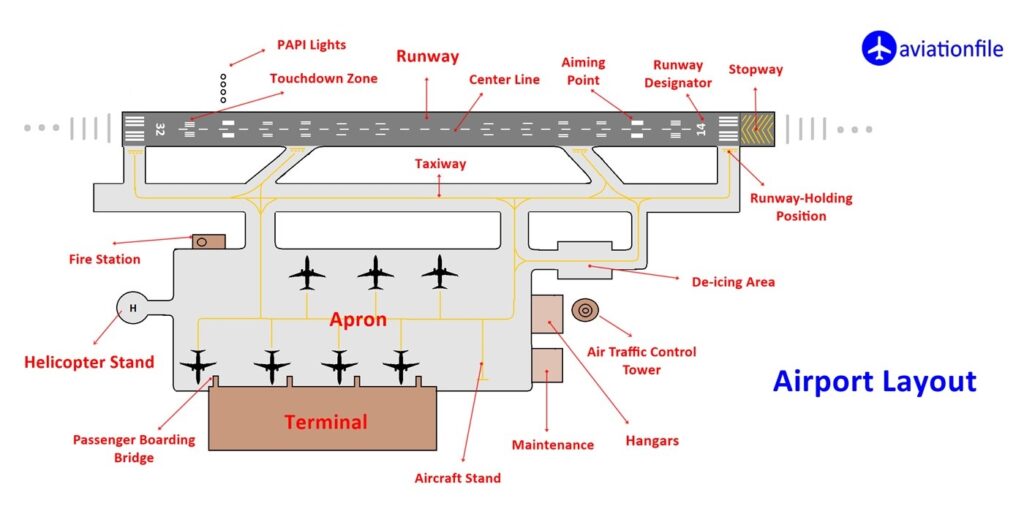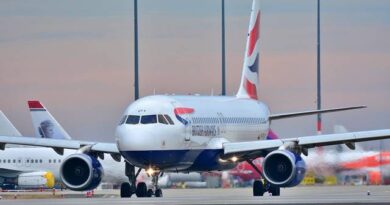Condition of Runway and Effects on Airport Operations
The condition of a runway is a critical factor that significantly impacts airport operations. As the primary surface for takeoff and landing, the condition of a runway directly affects the safety, efficiency, and capacity of an airport. Several factors can affect the condition of a runway, including weather conditions, regular wear and tear, maintenance activities, and other operational factors. Let’s take a closer look at how the condition of a runway can affect airport operations and the potential consequences.
Runway Condition and Safety
The safety of aircraft operations is the top priority at airports. A deteriorating or poorly maintained runway can pose serious safety risks. For example, cracks, potholes, or uneven surfaces on the runway can damage aircraft tires, landing gears, or even cause accidents during takeoff or landing. Adverse weather conditions, such as snow, ice, or standing water on the runway, can also reduce friction and make it more challenging for aircraft to brake and maintain control, increasing the risk of skidding or sliding off the runway.
Runway Condition and Operational Efficiency
The condition of a runway can also impact the operational efficiency of an airport. If a runway is closed or restricted due to poor condition, it can result in reduced capacity, delays, and disruptions to flight schedules. This can cause flight cancellations, missed connections, and additional costs for airlines, passengers, and airport operators. Moreover, maintenance activities required to repair or rehabilitate a runway can also disrupt normal operations and lead to closures or restrictions, further affecting airport efficiency.

Runway Condition and Economic Impact
Economic Impact: The condition of a runway can also have economic implications for an airport and the surrounding region. Airports are crucial economic engines that generate revenue through various activities, such as passenger fees, cargo operations, and retail services. Reduced capacity or disruptions in operations due to runway conditions can result in decreased revenue, increased costs for repairs and maintenance, and a negative impact on local businesses that depend on airport activities, such as tourism, hotels, and transportation services.
Runway Condition and Regulatory Compliance
Airports are subject to strict regulations and standards set by aviation authorities, such as the Federal Aviation Administration (FAA) in the United States or the International Civil Aviation Organization (ICAO) globally, to ensure safe and efficient operations. The condition of runways is closely monitored and regulated to meet these standards. Failure to comply with regulations can result in penalties, fines, or even suspension of airport operations.
Runway Condition and Reputational Impact
The condition of a runway can also affect the reputation of an airport. Airlines, passengers, and other stakeholders expect airports to maintain safe and efficient operations. Persistent issues with runway conditions can tarnish the reputation of an airport, resulting in decreased confidence from airlines, reduced passenger traffic, and potential loss of business opportunities.
In conclusion, the condition of a runway is a crucial factor that significantly impacts airport operations. Safety, operational efficiency, economic impact, regulatory compliance, and reputational impact are some of the key areas where runway conditions can have profound effects on an airport. Therefore, regular monitoring, maintenance, and timely repairs of runways are essential to ensure safe, efficient, and reliable airport operations, and to meet regulatory requirements and stakeholder expectations. Proper planning and investment in runway infrastructure are vital to ensure the smooth functioning of airports and the aviation industry as a whole.
References:
- Federal Aviation Administration (FAA). (n.d.). Airport Design. Retrieved from https://www.faa.gov/airports/engineering/design/
- International Civil Aviation Organization (ICAO). (2019). Annex 14 to the Convention on International Civil Aviation: Aerodromes, Volume I – Aerodrome Design and Operations. Montreal: ICAO.
- Airports Council International (ACI). (2018). Airport Economics Report 2018. Retrieved from https://store.aci.aero/product/airport-economics-report-2018/
- National Academies of Sciences, Engineering, and Medicine. (2016). Guidebook for Managing Small Airports. Washington, DC: The National Academies Press. doi:10.17226/23476
- Transportation Research Board (TRB). (2017). Airport Cooperative Research Program (ACRP) Report 177: Guidebook for Airport Irregular Operations (IROPS) Contingency Planning. Washington, DC: National Academies Press. doi:10.17226/24619


